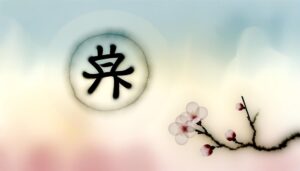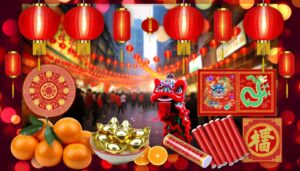What Is the Chinese Symbol for Friendship?
The Chinese symbol for friendship, 友 (yǒu), is rooted in the Shang Dynasty, depicting two hands clasped in mutual support. It comprises four strokes and is structured with two radicals, symbolizing cooperation and possession.
The character's pronunciation in Mandarin, particularly the tonal nuances, is essential for conveying its meaning. Friendship in Chinese culture embodies trust, loyalty, and mutual respect, often depicted in art through symbols like bamboo and plum blossoms.
Modern usage integrates traditional symbolism in various contexts, from digital communication to fashion, highlighting its enduring relevance. Discover more about its rich cultural significance and global influence.
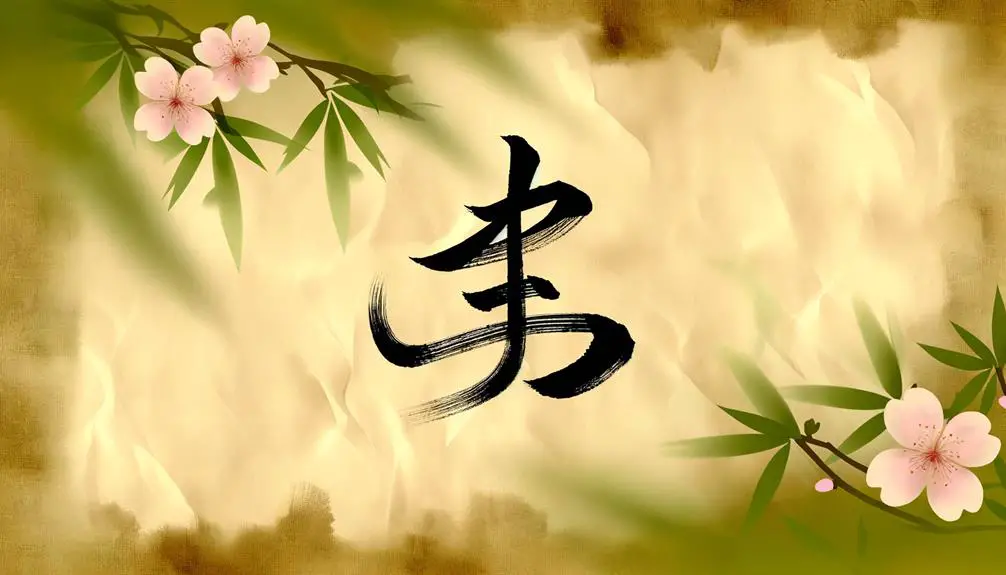
Key Takeaways
- The Chinese character for friendship is 友 (yǒu), originating from the Shang Dynasty and symbolizing mutual support.
- It comprises four strokes and includes radicals signifying a hand and possession, reflecting cooperation.
- Accurate pronunciation in Mandarin is crucial, with the character pronounced in the third tone.
- The symbol appears in Chinese art, literature, and calligraphy, emphasizing trust, loyalty, and mutual respect.
- Modern usage blends traditional and contemporary contexts, featuring in digital platforms, fashion, and cultural products.
Historical Origins
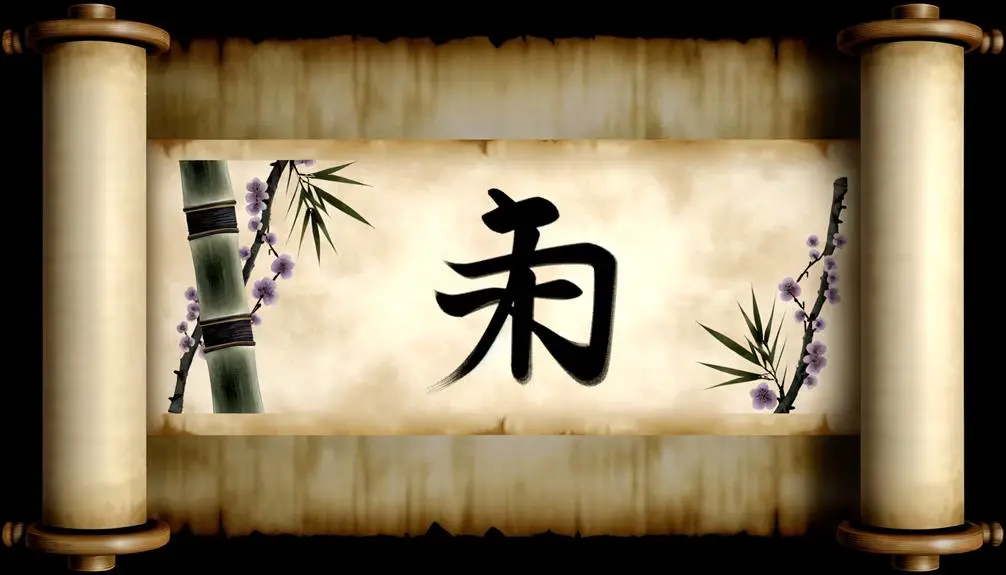
Tracing the historical origins of the symbol for friendship in Chinese necessitates an exploration of ancient calligraphy, cultural exchanges, and linguistic evolution.
The ideograph for friendship, 友 (yǒu), dates back to the Shang Dynasty (1600–1046 BCE) and is rooted in the oracle bone script. This early form of writing reveals how pictographs evolved to represent abstract concepts.
The character 友, initially depicting two hands clasping, symbolized mutual support and companionship. Over centuries, China's extensive trade routes and interactions with neighboring cultures enriched the semantic layers of 友. These exchanges allowed the character to not only retain its original meaning but also to adapt nuances reflective of emerging social constructs, thereby embedding friendship deeply within Chinese cultural heritage.
Character Structure
The character for friendship in Chinese, '友' (yǒu), is composed of basic stroke orders that adhere to traditional calligraphic principles. Its structure includes specific radical components that hint at its meaning and usage in historical contexts.
Understanding the historical evolution of this character provides insight into how its form and significance have been shaped over centuries.
Basic Stroke Order
Understanding the basic stroke order and character structure of the Chinese symbol for friendship, 友 (yǒu), is essential for accurate writing and recognition.
The character comprises four strokes, each following a precise sequence to maintain its integrity and legibility.
Begin with a horizontal stroke from left to right, followed by a vertical stroke descending from the middle of the first stroke.
The third stroke is a diagonal line starting at the intersection and moving downward to the left.
The final stroke is another diagonal line, beginning at the same intersection but descending to the right.
Mastery of this stroke order guarantees that the character is balanced and aesthetically pleasing, reflecting the cultural importance of precision in Chinese calligraphy.
Radical Components
Frequently, the radical components of the Chinese character for friendship, 友 (yǒu), offer nuanced insights into its semantic and phonetic dimensions, highlighting the intricate interplay between its structural elements.
The character is composed of two primary radicals: 又 (yòu), meaning 'again' or 'hand', and the upper component resembling �, which is often interpreted as a pictograph of a hand. This combination suggests actions performed together, symbolizing cooperation and mutual support, essential aspects of friendship.
Additionally, the phonetic aspect of 友 derives from the shared pronunciation of its radical components, integrating meaning and sound. Analyzing these radicals provides a deeper appreciation of how the character encapsulates the essence of friendship through its composite structure.
Historical Evolution
Tracing the historical evolution of the Chinese character for friendship, 友 (yǒu), reveals significant transformations in its structure and form over millennia, reflecting changes in script styles and cultural contexts.
Originating from ancient oracle bone inscriptions, the character initially depicted two hands clasping, symbolizing mutual support and camaraderie.
As Chinese writing evolved through the Bronze script and into Seal script, the character became more stylized and abstract.
By the time of the clerical script during the Han Dynasty, 友 had gained the more recognizable form used in modern Chinese.
This progression underscores the fluid nature of written Chinese, adapting to aesthetic and functional shifts while retaining its core symbolic meaning of friendship.
Phonetic Pronunciation
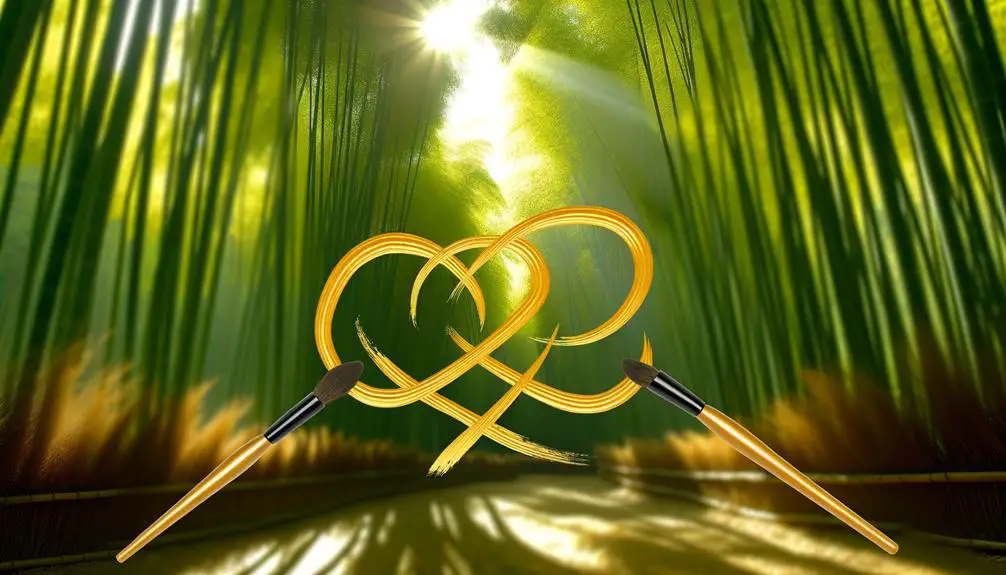
The phonetic pronunciation of the Chinese symbol for friendship, 友 (yǒu), is crucial for accurately conveying the concept in verbal communication. Mastery of this pronunciation involves understanding the tonal nuances of Mandarin. The character 友 is pronounced with a third tone, which starts mid-pitch, dips to a low pitch, and then rises again.
Here is a contextual breakdown of its pronunciation:
| Pinyin | Tone | Description |
|---|---|---|
| yǒu | 3rd | Mid-low-mid pitch contour |
| y | 3rd | Initial sound, starting tone |
| ǒu | 3rd | Vowel sound, completes tone |
Accurate pronunciation is crucial in Mandarin, as tonal variation can alter meanings significantly, highlighting the importance of precise articulation for conveying friendship.
Etymology
The symbol for friendship in Chinese, 友 (yǒu), finds its origins in ancient Chinese calligraphy, where it was initially depicted as two hands clasping each other.
This character has undergone significant transformations over centuries, reflecting changes in script styles and cultural contexts.
Understanding the evolution of the 友 symbol offers valuable insights into the historical and social dynamics that have shaped its contemporary form and meaning.
Origins of Friendship Symbol
Understanding the origins of the Chinese symbol for friendship requires an in-depth exploration into the historical and linguistic evolution of the character 友 (yǒu). This character, comprising two key components, reflects a nuanced depiction of companionship.
The left component (又, yòu) signifies a hand, symbolizing assistance and mutual support. The right component (有, yǒu) originally denoted possession or existence, extending the idea of having a friend. Historically, the amalgamation of these elements evolved through various script forms, mirroring societal values on camaraderie.
Ancient Chinese Calligraphy
Ancient Chinese calligraphy, with its intricate evolution, provides a profound lens through which the etymology of the friendship symbol 友 (yǒu) can be meticulously examined.
This character, rooted in the Shang Dynasty's oracle bone script, initially depicted two hands clasping, symbolizing unity and mutual support.
In subsequent periods, the character's form evolved into the seal script of the Zhou Dynasty, where its lines became more fluid and stylized, yet retained the essence of camaraderie.
The clerical script of the Han Dynasty further refined its structure, offering a more balanced and graceful appearance.
Each transformation in calligraphy encapsulates the cultural and social emphasis placed on friendship, underscoring its enduring significance in Chinese heritage.
Evolution Over Centuries
Tracing the evolution of the Chinese character for friendship (友, yǒu) through centuries reveals a profound interplay between linguistic development and socio-cultural influences. The character's earliest forms, found in oracle bone script, were pictorial representations denoting unity and companionship. Over dynastic periods, its structure evolved, reflecting shifts in calligraphic styles and cultural contexts. The shift from seal script to clerical script during the Han Dynasty marked significant standardization, while the adoption of regular script in later periods solidified its modern form.
| Time Period | Script Type |
|---|---|
| Oracle Bone | Pictorial |
| Seal Script | Stylized |
| Clerical Script | Standardized |
| Regular Script | Modern Form |
This evolution mirrors broader societal changes, underscoring the character's enduring significance in Chinese culture.
Symbolic Meanings
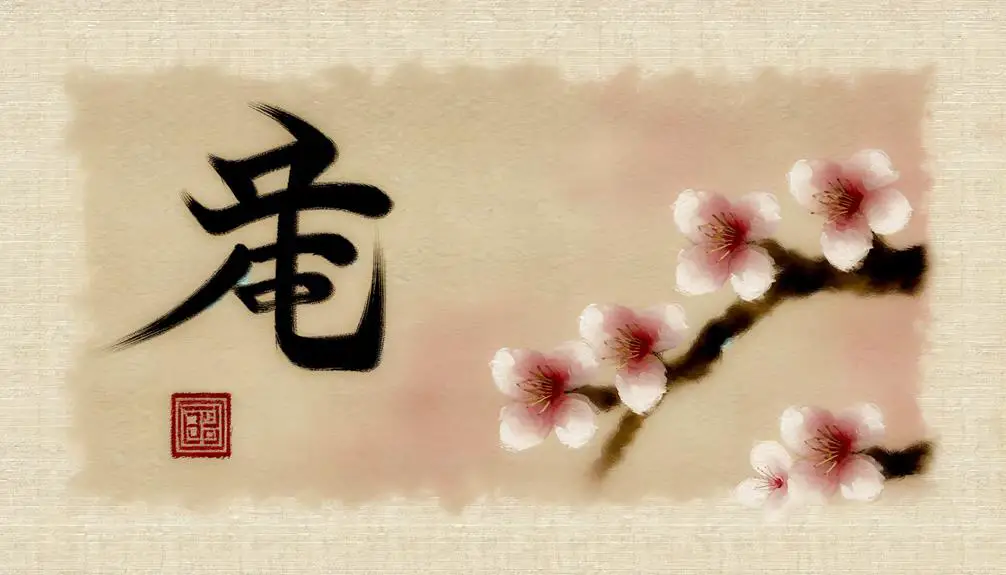
The Chinese symbol for friendship, 友 (yǒu), carries a rich tapestry of meanings that extend beyond mere companionship, encapsulating notions of trust, loyalty, and mutual respect.
Analyzing the character's components, 友 combines two radicals: 又 (yòu), meaning 'again' or 'right hand,' and a variant of 爪 (zhǎo), symbolizing 'claw' or 'grasp.' This amalgamation suggests a bond that is repeatedly reaffirmed, akin to an enduring handshake.
In ancient texts, 友 was not merely a descriptor of social connections but a profound acknowledgment of deep, abiding relationships. It signifies a mutual, unwavering commitment and the assurance of support through adversity, illustrating the depth and resilience inherent in true friendship.
This multi-layered interpretation enriches our understanding of the character's essence.
Cultural Significance
The cultural significance of the Chinese symbol for friendship is deeply rooted in historical context, where ancient texts and traditions emphasize the value of camaraderie.
This symbol frequently appears in various forms of art, from traditional calligraphy to contemporary digital designs, reflecting its enduring importance.
Modern interpretations continue to evolve, yet the symbol remains a powerful representation of mutual respect and emotional bonds in Chinese society.
Historical Context
Throughout millennia, the concept of friendship in Chinese culture has been deeply intertwined with philosophical, literary, and social traditions, reflecting its profound significance across various periods in history. Confucianism, emphasizing virtues like loyalty and righteousness, has long extolled friendship as a cornerstone of moral society.
Classical texts, such as 'The Analects' and 'Mencius,' highlight the importance of virtuous companionship in personal development and governance. Additionally, literary works from poets of the Tang and Song Dynasties often celebrate the bonds of friendship, portraying it as a source of emotional support and intellectual exchange.
These cultural artifacts underscore how friendship has been essential in shaping social interactions, moral conduct, and philosophical discourses throughout Chinese history.
Symbolism in Art
Reflecting the deep-rooted historical appreciation for friendship, Chinese art frequently employs various symbols and motifs to convey the profound cultural significance of these bonds. The use of certain flora, fauna, and calligraphic elements in artwork not only beautifies the visual presentation but also imbues it with layers of meaning. For instance, bamboo symbolizes resilience and integrity, while the plum blossom represents endurance and perseverance. These symbols, when depicted together, can illustrate the enduring nature of true friendship, resilient against the trials of time.
| Symbol | Representation | Cultural Significance |
|---|---|---|
| Bamboo | Resilience, Integrity | Strength and uprightness in friendship |
| Plum Blossom | Endurance, Perseverance | Withstanding hardships, similar to true friends |
| Lotus | Purity, Harmony | A pure and harmonious friendship |
| Mandarin Ducks | Partnership, Loyalty | The loyalty and companionship of friends |
Such artistic symbolism deepens our understanding of friendship's valued place in Chinese culture.
Modern Interpretations
In contemporary Chinese society, the representation of friendship continues to evolve, blending traditional symbols with modern elements to reflect the dynamic and multifaceted nature of human connections.
Digital communication platforms often feature emojis and stickers inspired by classic Chinese characters for friendship, juxtaposing ancient calligraphy with contemporary digital art.
Social media amplifies these symbols, fostering a shared cultural lexicon that transcends generational gaps.
Additionally, fashion and accessories frequently incorporate the character for friendship (友) in innovative designs, making it a popular motif in everyday life.
This fusion of old and new enriches the cultural significance of friendship, ensuring its relevance in a rapidly changing world while honoring its historical roots.
In Calligraphy

Calligraphy, a revered art form in Chinese culture, elevates the symbol for friendship (友谊) through meticulous brush strokes that encapsulate both aesthetic beauty and profound meaning. Each stroke in Chinese calligraphy is deliberate, reflecting harmony, balance, and rhythm.
The character 友 (yǒu) represents companionship, while 谊 (yì) conveys a sense of deep connection and loyalty. Calligraphers employ varying techniques such as the fluid 'running script' or the structured 'regular script' to infuse the characters with emotional resonance. The choice of ink density, paper texture, and brush type further enhance the visual and emotional impact.
Through calligraphy, the symbol for friendship not only communicates linguistic meaning but also embodies the essence of enduring bonds.
In Literature
While calligraphy visually captures the essence of friendship, Chinese literature explores and enriches this concept through narratives, poetry, and philosophical texts.
Classical works like the 'Analects' by Confucius emphasize the virtues of loyalty and mutual respect, foundational to friendship.
In Tang dynasty poetry, Li Bai and Du Fu eloquently depict the depth of camaraderie amidst life's fleeting moments.
Additionally, the 'Romance of the Three Kingdoms' presents multifaceted friendships that navigate loyalty and betrayal, offering profound insights into human relationships.
These literary creations not only portray friendship's emotional texture but also its ethical dimensions, reflecting the cultural reverence for harmonious social bonds.
Through such texts, Chinese literature profoundly deepens our understanding of friendship's symbolic and practical significance.
In Art
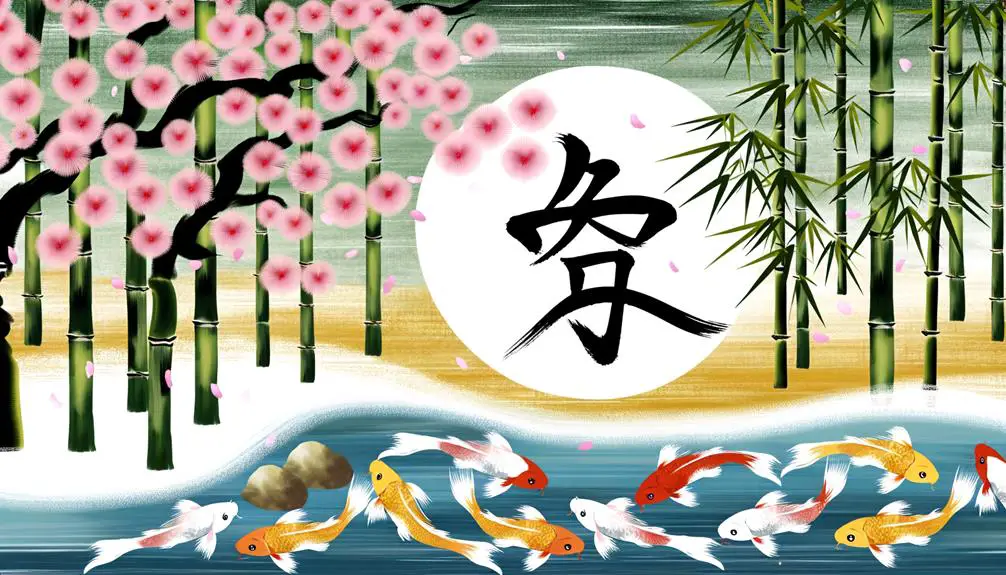
Artistic expressions in Chinese culture frequently employ symbolic imagery and motifs to represent the profound ideals of friendship. Traditional Chinese paintings often feature elements such as bamboo, orchids, and plum blossoms, which collectively symbolize perseverance and resilience—qualities admired in enduring friendships.
In addition, the use of paired animals, like cranes or mandarin ducks, signifies harmony and mutual support. Calligraphy, another esteemed art form, may depict characters related to friendship, such as 友 (yǒu), enhancing the aesthetic with layered meanings.
Besides, decorative arts, including ceramics and textiles, often incorporate these symbols, reinforcing societal values and interpersonal bonds. This rich visual symbolism not only beautifies but also encapsulates and communicates the essence of friendship within the cultural context.
Common Phrases
In Chinese culture, several idiomatic expressions and proverbs encapsulate the essence of friendship, reflecting its significance and the values it embodies.
One prominent phrase is '朋友满天下' (péng yǒu mǎn tiān xià), meaning 'friends all over the world,' illustrating the ideal of widespread, enduring connections.
Another is '患难见真情' (huàn nàn jiàn zhēn qíng), which translates to 'true feelings are seen in adversity,' emphasizing that genuine friendship is tested and revealed in difficult times.
Additionally, '四海之内皆兄弟' (sì hǎi zhī nèi jiē xiōng dì) means 'within the four seas, all men are brothers,' underscoring the universal brotherhood and unity among friends.
These phrases not only highlight friendship's depth but also its resilience and universality.
Modern Usage
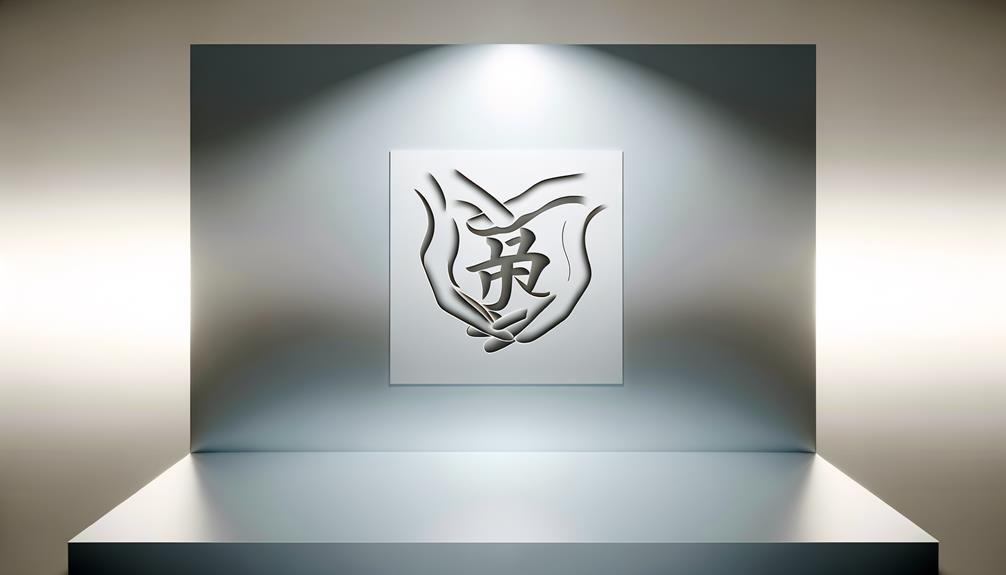
Building on the rich tapestry of idiomatic expressions and proverbs, modern usage of the symbol for friendship in Chinese culture continues to evolve, reflecting contemporary social dynamics and digital communication trends. Emoticons, social media, and instant messaging apps have introduced new visual and textual representations of friendship. The character '友' (yǒu) is frequently used in digital communications, often accompanied by emojis to convey warmth and camaraderie. Additionally, friendship symbols appear in fashion, art, and consumer products, illustrating a blend of tradition and modernity.
| Symbol | Usage Context | Example Platforms |
|---|---|---|
| 友 | Text messages, social media | WeChat, QQ |
| � | Emojis in digital chats | WhatsApp, Weibo |
| 友情 | Formal communication | Emails, letters |
| 友谊 | Cultural products, art | Apparel, posters |
This table highlights the multifaceted modern applications of friendship symbols in Chinese culture.
Global Influence
The symbol for friendship in Chinese culture has transcended national boundaries, becoming a significant element in global art, fashion, and communication. This phenomenon can be attributed to the symbol's universal appeal and the growing influence of Chinese culture worldwide. Artists incorporate it into various mediums, from paintings to digital art, reflecting its profound meaning.
Fashion designers use the symbol in clothing and accessories, promoting cross-cultural appreciation. Moreover, digital communication platforms have adopted the symbol in emojis and stickers, allowing people to convey sentiments of friendship transculturally.
This widespread acceptance underscores the symbol's power to foster human connection across diverse societies, highlighting the enduring relevance of Chinese cultural elements in a globalized world.
Conclusion
In the grand tapestry of linguistic history, the Chinese symbol for friendship emerges as a beacon of camaraderie and mutual respect. Its intricate character structure, phonetic nuances, and rich etymology paint a vivid portrait of its enduring significance.
From ancient art to modern usage, this emblem of alliance continues to influence global cultures profoundly. The symbol for friendship in Chinese stands as a timeless proof of the unyielding human spirit of connection and unity.

